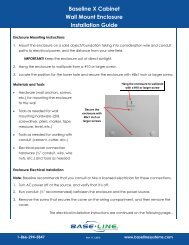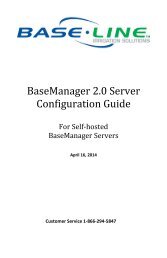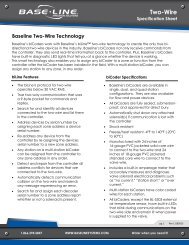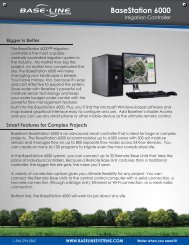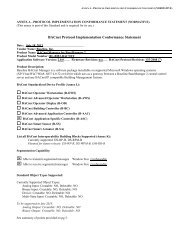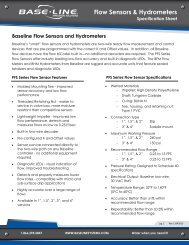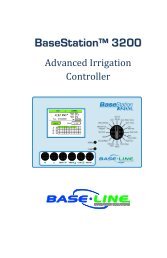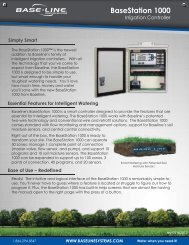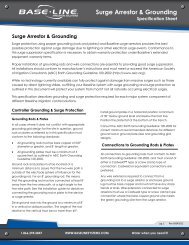Watering with Soil Moisture Sensors - Baseline Systems
Watering with Soil Moisture Sensors - Baseline Systems
Watering with Soil Moisture Sensors - Baseline Systems
Create successful ePaper yourself
Turn your PDF publications into a flip-book with our unique Google optimized e-Paper software.
©2011, <strong>Baseline</strong> Irrigation SolutionsNot All Irrigation <strong>Systems</strong> Are Created EquallyIn order to irrigate properly, you need to understand the basics of your system. Irrigation systems arebroken into smaller sections called zones or stations. The zone is made up of a group of sprinkler headsthat are turned on by the same valve.Always remember that the smallest area the controller can manage is a zone. If you have a dry or wetzone, you can adjust it in several ways from the controller, but if you have a wet or dry spot inside thezone, you can either choose to fix whatever is causing the issue or you can carry on and find other waysto compensate. If you choose not to fix the issues <strong>with</strong>in the zone, but you’re still trying to achieve thegoal of using the least amount of water possible to keep the soil moisture content in the root zonebetween field capacity and maximum allowed depletion, you will end up over-irrigating some parts ofthe zone in order to compensate for the dry areas. A soil moisture sensor can help establish a betterwatering schedule, but you will continue to fight <strong>with</strong> wet areas and the problems they cause. Because itis nearly impossible to get perfect distribution uniformity, each manager has to decide where the line isbetween making system improvements and watering to the dry spot.In addition to issues <strong>with</strong>in your zones, you might also be fighting <strong>with</strong> a sprinkler system that iswoefully inadequate, which is the case <strong>with</strong> many of the best-selling sprinkler systems in the irrigationindustry today. To learn more about distribution uniformity (DU) issues and how to fix them, refer to thefollowing resources:• Landscape Irrigation System Evaluation and Managementhttp://ucanr.org/sites/UrbanHort/files/80223.pdf• The Irrigation Association’s Technical Paper Library (search on “distribution uniformity”)http://www.irrigation.org/resources/technical_papers/How Distribution Uniformity Affects Your <strong>Watering</strong> GoalsPerfect distribution uniformity (100%) is not really practical in landscape irrigation; however, it doeshelp the irrigator understand the ideal situation. If you had 100% distribution uniformity, where theapplied water infiltrates the soil consistently both laterally and vertically (as illustrated below) all plantswould respond to soil moisture conditions equally.<strong>Watering</strong> <strong>with</strong> <strong>Soil</strong> <strong>Moisture</strong> <strong>Sensors</strong>11 | P age



